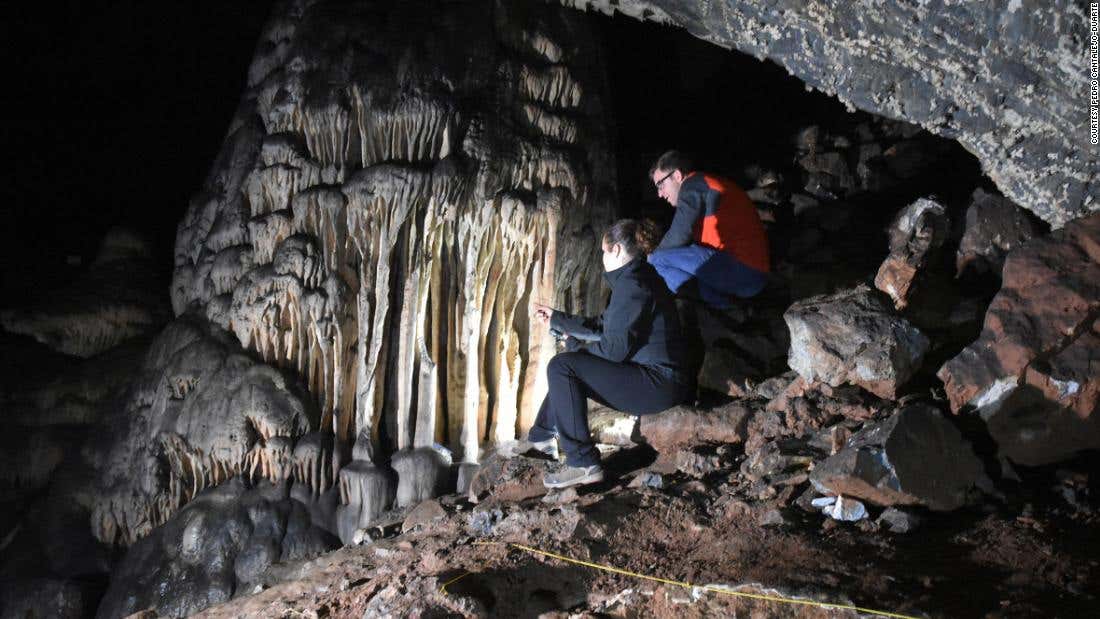Cave painting show Neanderthals were not the boorish relatives of Homo sapiens
Neanderthals, long perceived to have been unsophisticated and brutish, really did paint stalagmites in a Spanish cave 60,000 years ago.

[August 3, 2021: PNAS]
Red markings, which date back to more than 60,000 years ago, were made on a massive stalagmite 325 feet (100 meters) into Cueva de Ardales near Málaga, Spain. (CREDIT: Pedro Cantalejo-Duarte)
Neanderthals, long perceived to have been unsophisticated and brutish, really did paint stalagmites in a Spanish cave more than 60,000 years ago, according to a recent study.
The issue had roiled the paleoarchaeology community ever since the publication of a 2018 paper attributing red ocher pigment found on the stalagmitic dome of Cueva de Ardales to our extinct "cousin" species.
The dating suggested the art was at least 64,800 years old, made at a time when modern humans did not inhabit the continent.
But the finding was contentious, and "a scientific article said that perhaps these pigments were a natural thing," a result of iron oxide flow, Francesco d'Errico, co-author of a new paper in the journal PNAS told AFP.
A new analysis revealed the composition and placement of the pigments were not consistent with natural processes—instead, the pigments were applied through splattering and blowing.
What's more, their texture did not match natural samples taken from the caves, suggesting the pigments came from an external source.
The stalagmite section in the Ardales Cave in Malaga, Spain that was painted with red ochre, pigment making it probably the oldest Neanderthal painting ever found in a European cave. (CREDIT: University of Barcelona)
More detailed dating showed that the pigments were applied at different points in time, separated by more than ten thousand years.
This "supports the hypothesis that the Neanderthals came on several occasions, over several thousand years, to mark the cave with pigments," said d'Errico, of the University of Bordeaux.
It is difficult to compare the Neanderthal "art" to wall paintings made by prehistoric modern humans, such as those found in the Chauvet-Pont d'Arc cave of France, more 30,000 years old.
But the new finding adds to increasing evidence that Neanderthals, whose lineage went extinct around 40,000 years ago, were not the boorish relatives of Homo sapiens they were long portrayed to be.
The team wrote that the pigments are not "art" in the narrow sense of the word "but rather the result of graphic behaviors intent on perpetuating the symbolic significance of a space."
The cave formations "played a fundamental role in the symbolic systems of some Neanderthal communities," though what those symbols meant remains a mystery for now.
Like these kind of feel good stories? Get the Brighter Side of News' newsletter.
Tags: #New_Discoveries, #Neanderthal, #Art, #Homo_Sapien, #Evolution, #The_Brighter_Side_of_News



